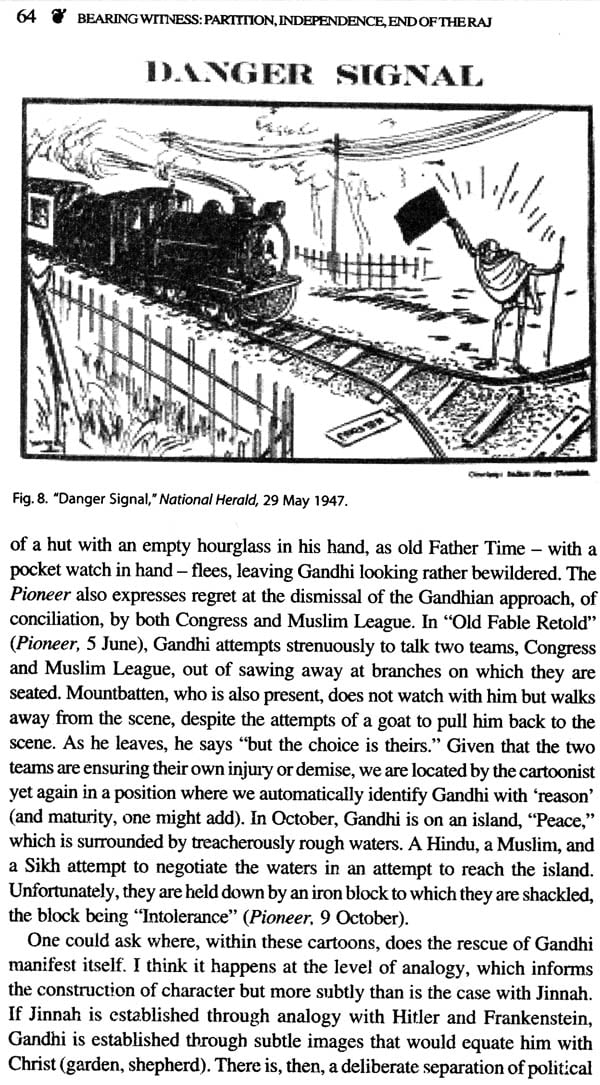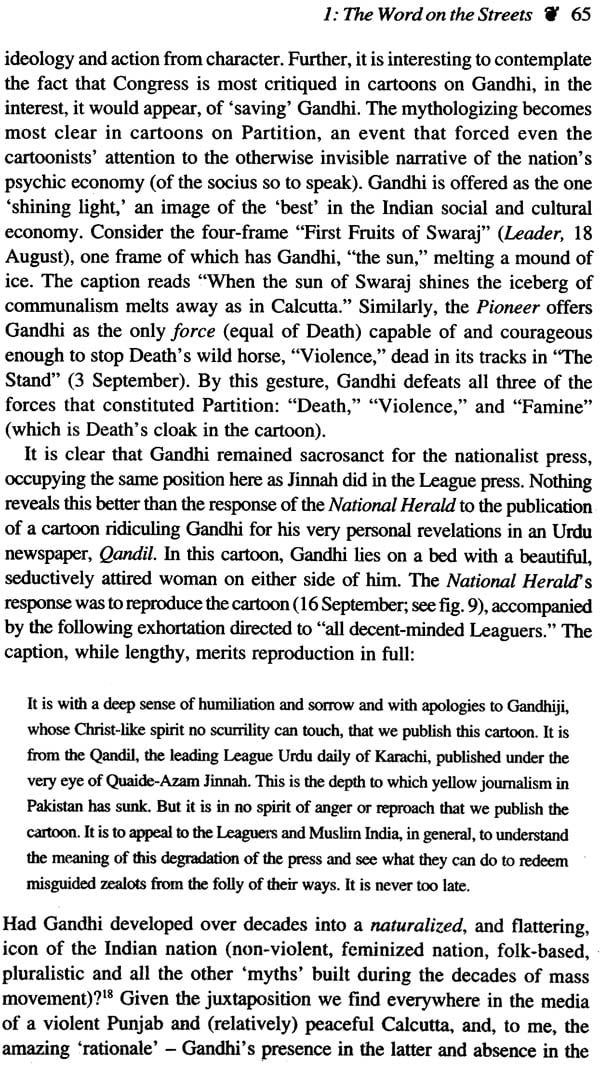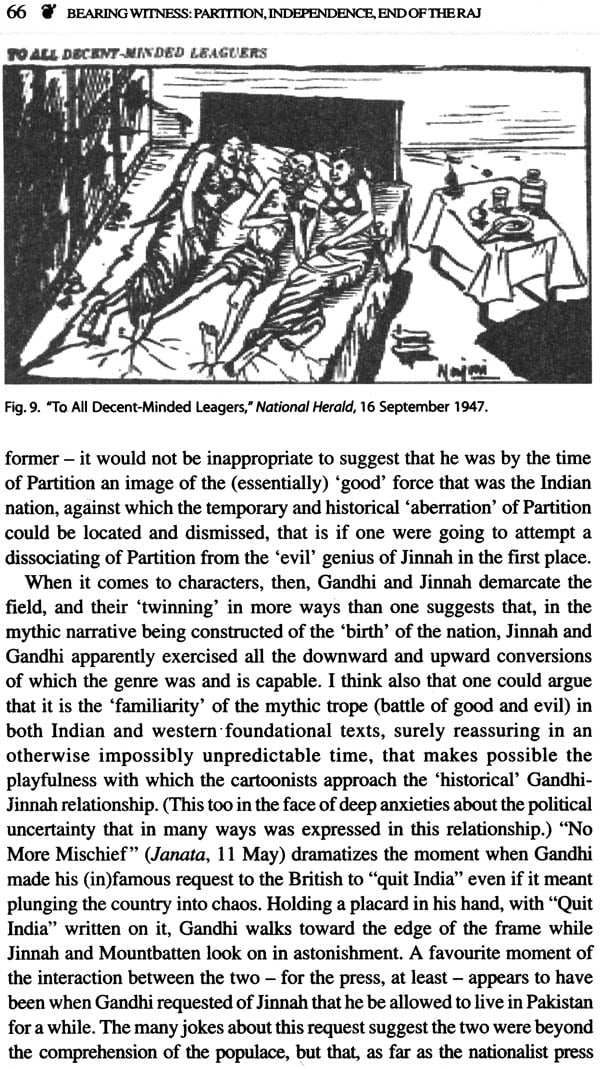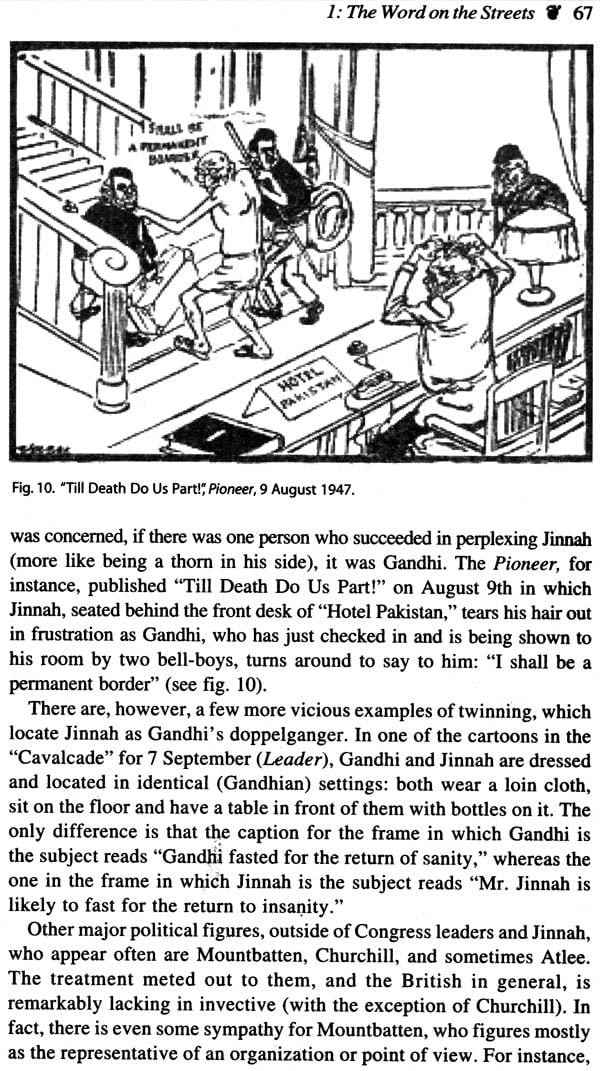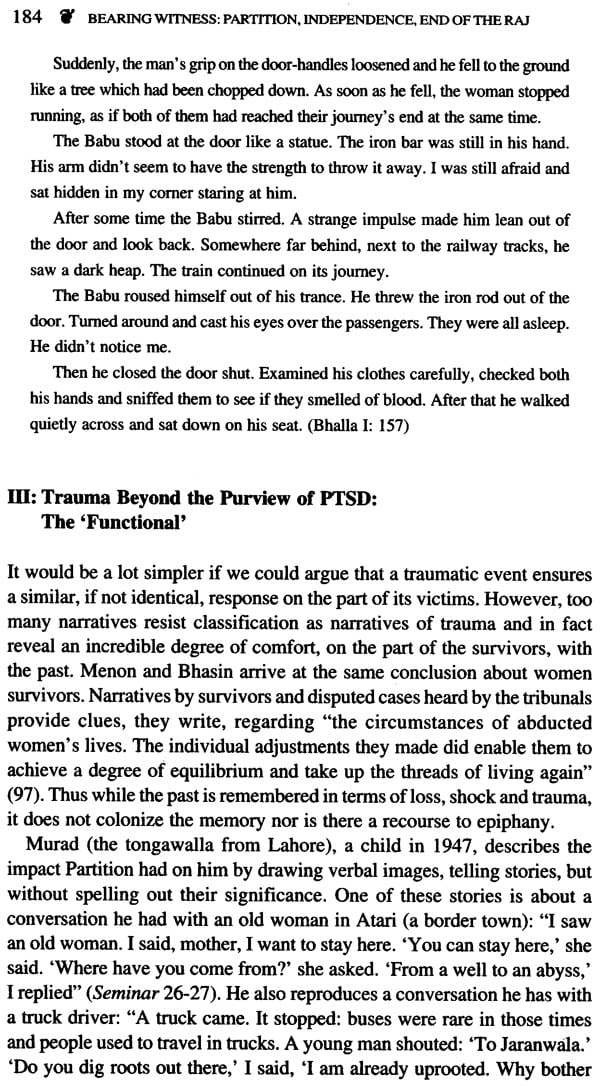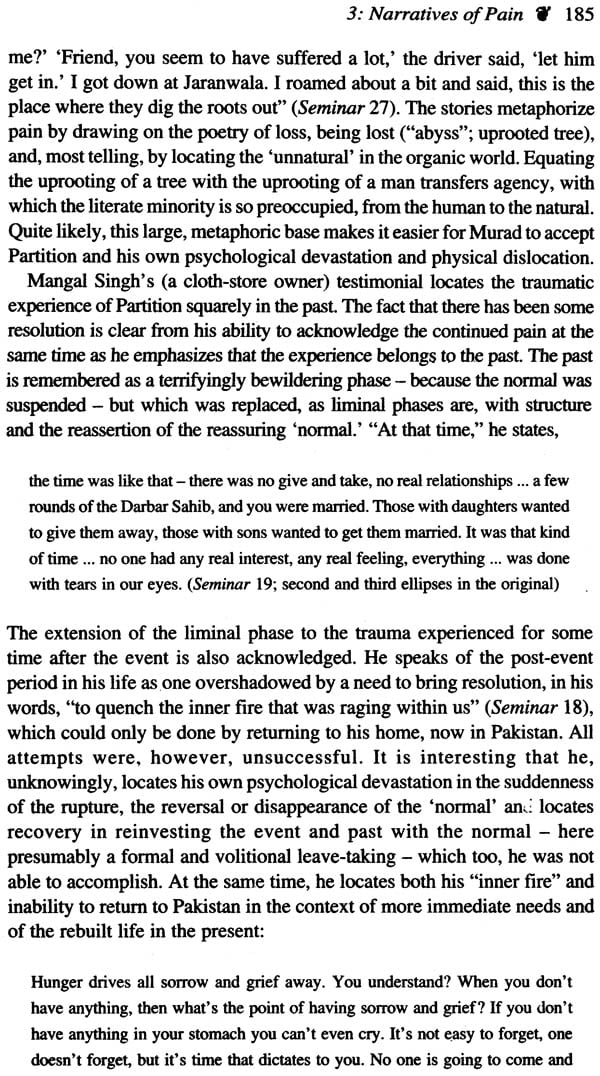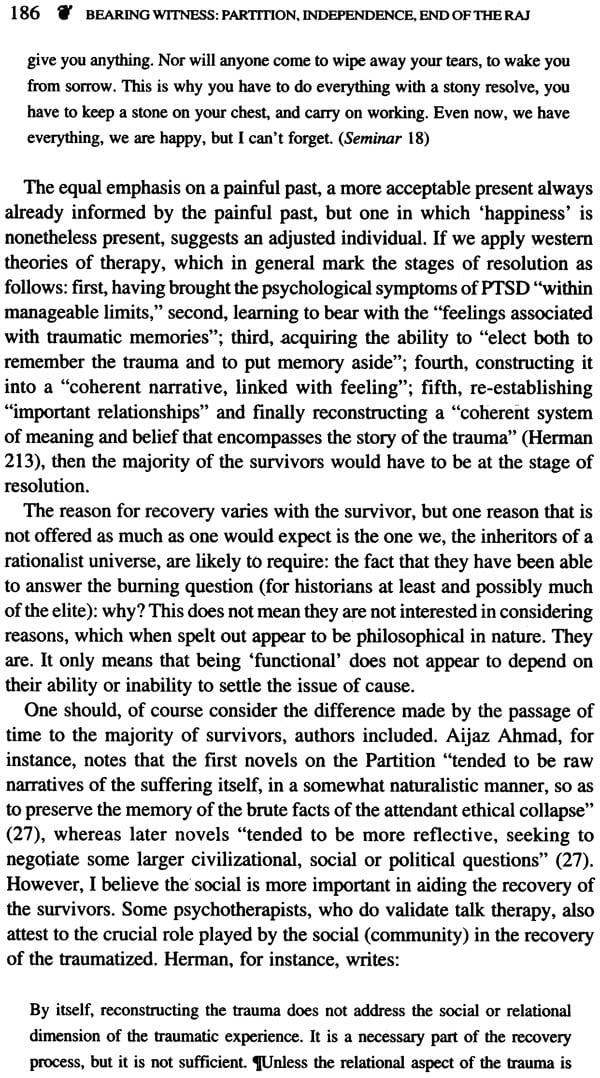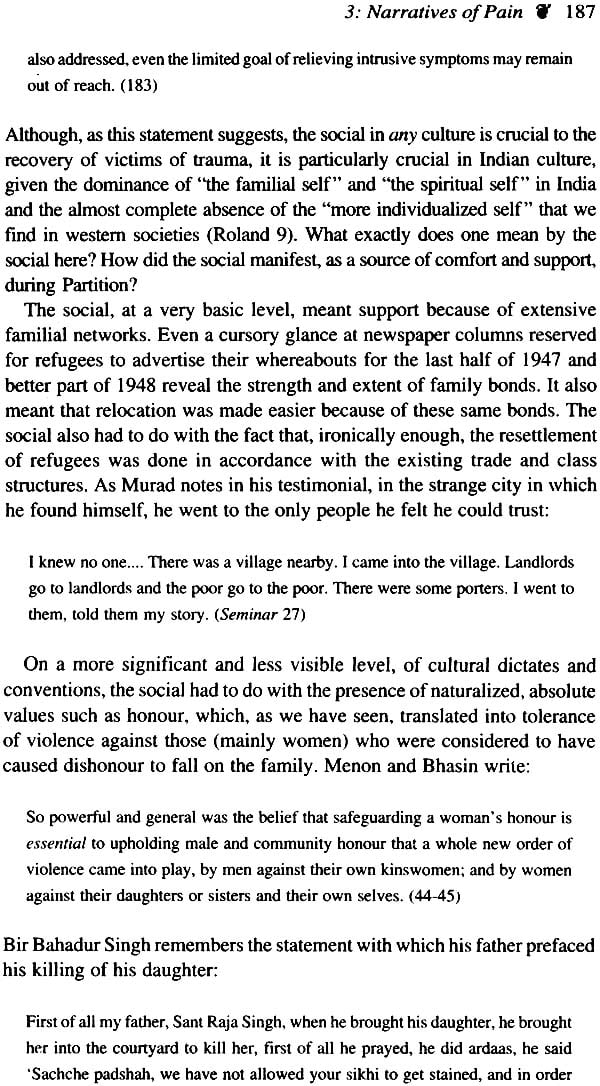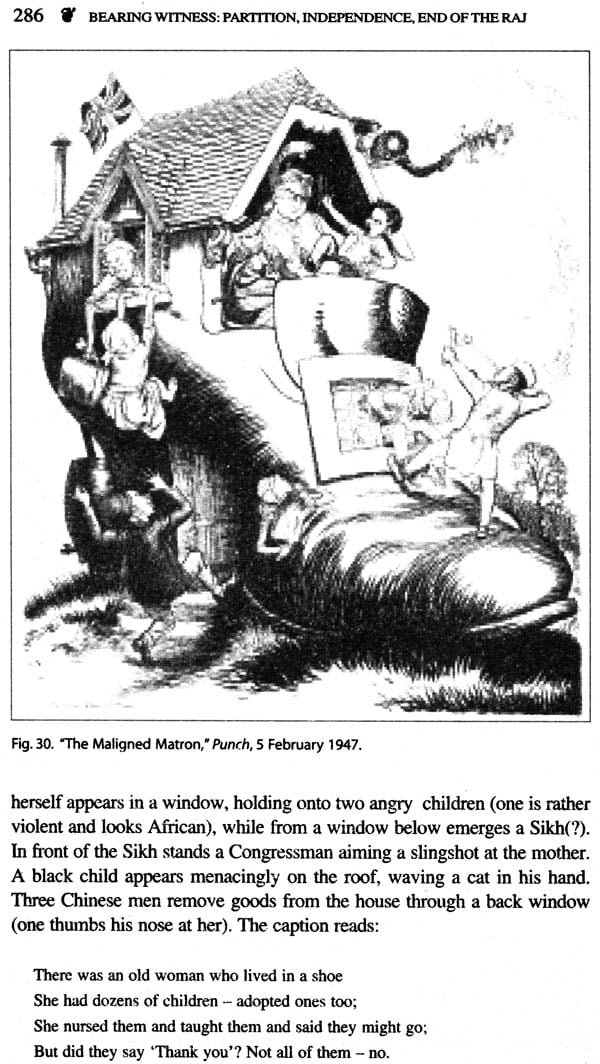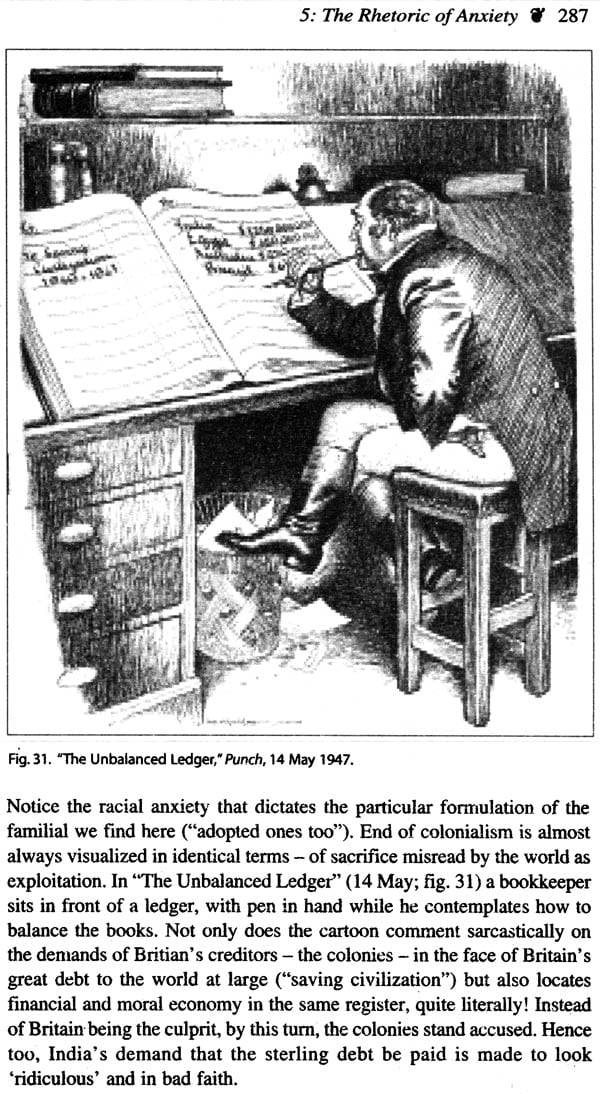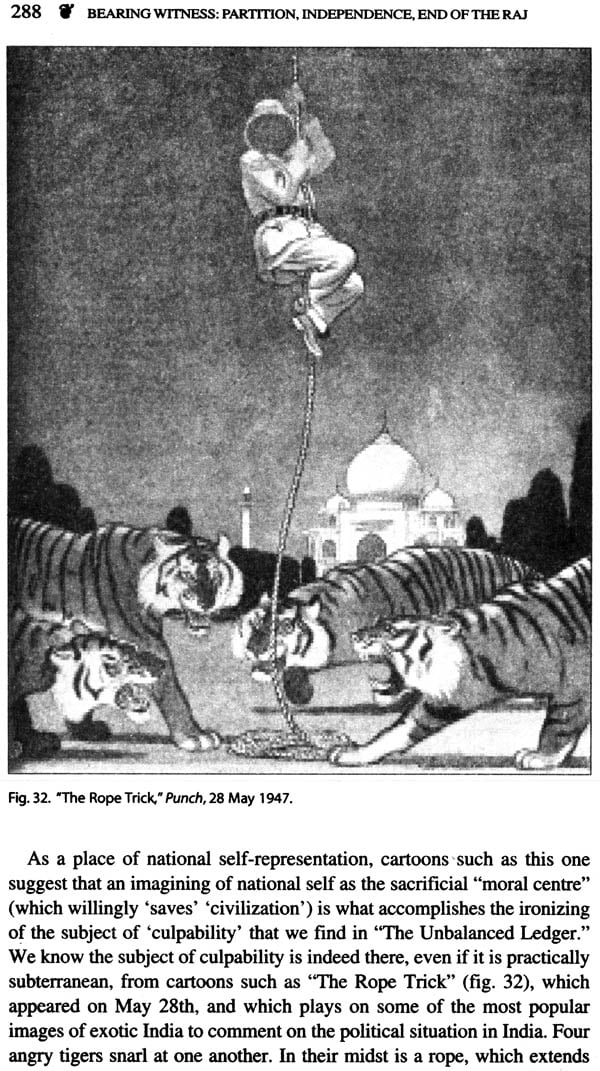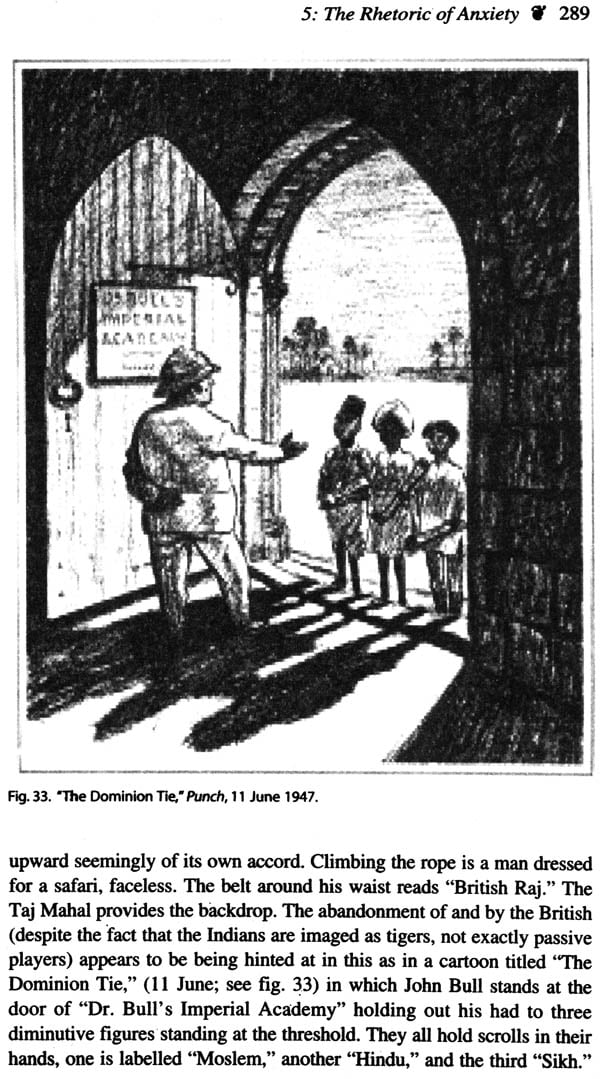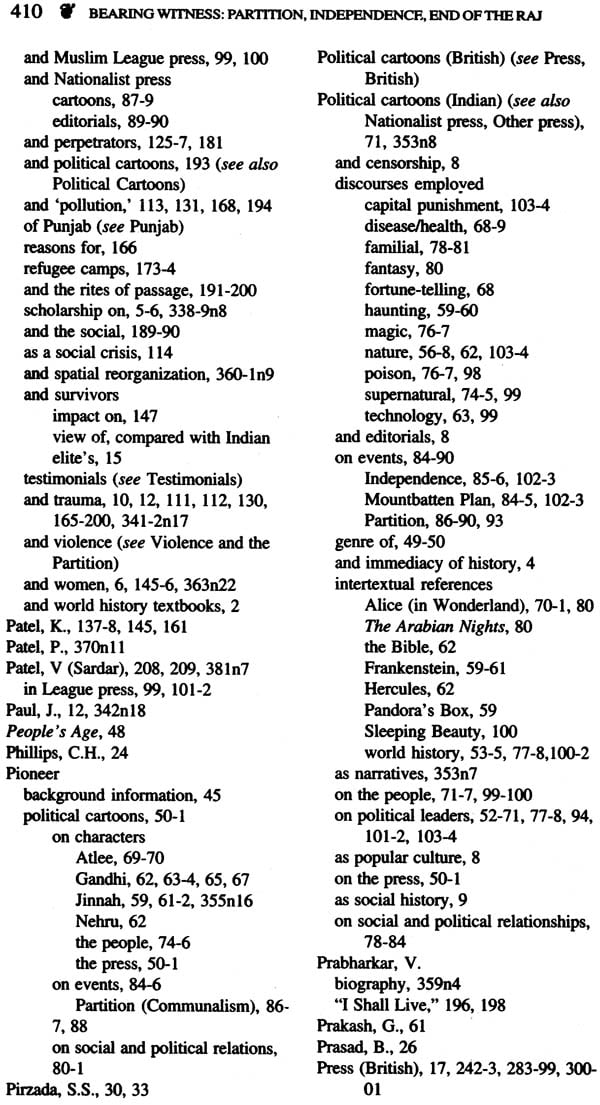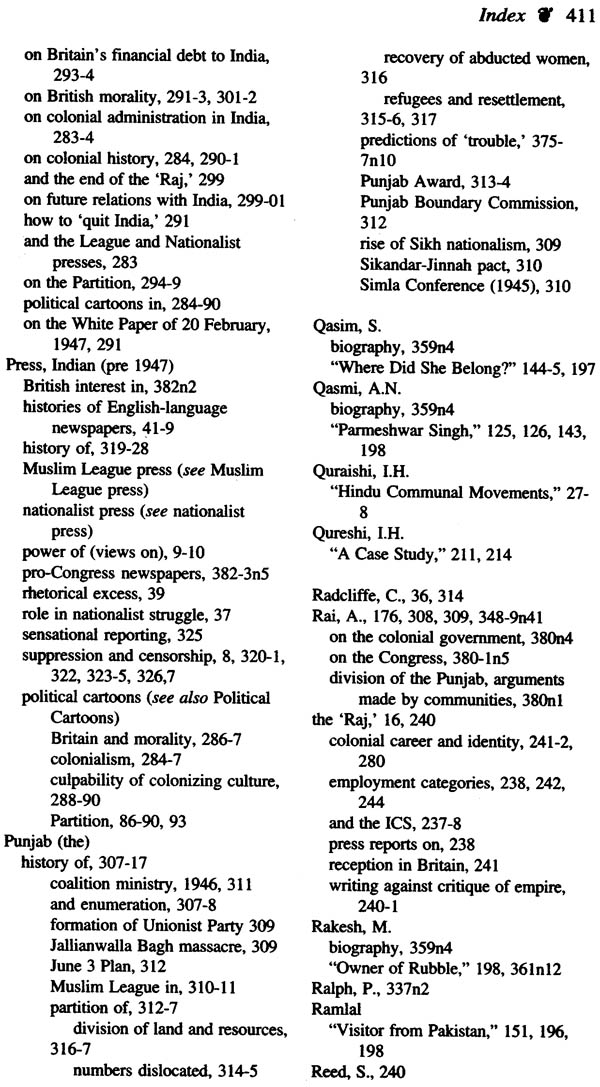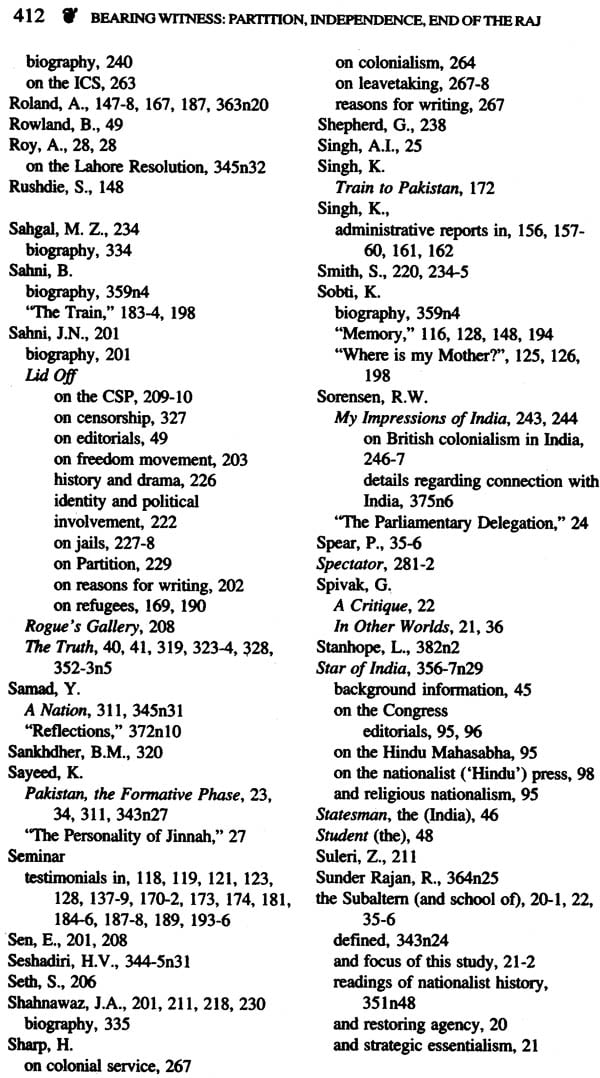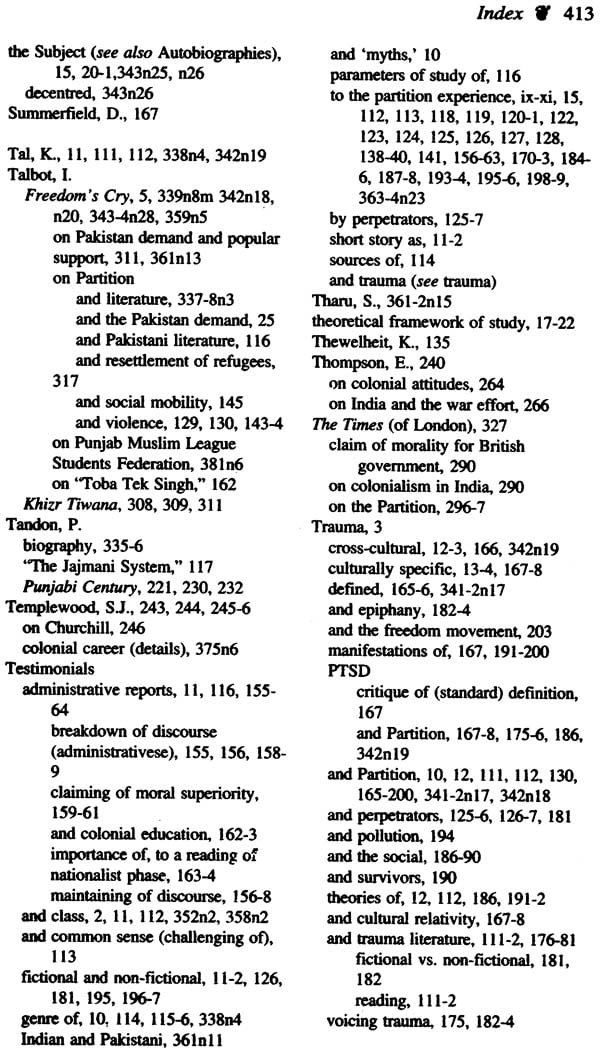
Bearing Witness (Partition, Independence, End of The Raj)
Book Specification
| Item Code: | NAH095 |
| Author: | Sukeshi Kamra |
| Publisher: | Lotus Collection |
| Language: | English |
| Edition: | 2003 |
| ISBN: | 9788174362865 |
| Pages: | 430 (Throughout B/W Illustration) |
| Cover: | Hardcover |
| Other Details | 8.5 inch x 5.5 inch |
| Weight | 600 gm |
Book Description
August 14/15, 1947, means more than the 'Independence' of India. It marks the birth of two nation states, India and Pakistan, and is fixed in the memory of many as Partition and the end of the Raj.
Bearing Witness nuances this historical moment by considering contemporary and post-event responses to Partition, inherited by Indians and Pakistanis as one of uncontested significance. From testimonials and speeches by Jinnah and Nehru to fictional and non-fictional accounts by Indians and the British, and political cartoons from English newspapers at the time. Kamra offers an inductive study of primary texts ignored until now. The book studies the three groups most affected by the events of 1947: the educated Indians, for whom the moment was a rite of passage; the survivors of Partition, for whom the event is inextricably linked with trauma and loss of home, family, and community: and the British, for whom this heralded exile.
Sukeshi Kamra is an assistant professor of English at Carleton University, in Canada. Bearing Witness was written while she was at Okanagan University College, In Canada. She has published articles on Partition literature and history. Salman Rushdie and Rohinton Mistry. She is currently working on literature and popular culture of the freedom movement. a project that is being funded largely by the Social Sciences and Humanities Research Council of Canada and in part by the Shastri Indo-Canadian Institute and Carleton University.
Bearing Witness was named 2002 Kiriyama Prize. Notable Book and Shortlisted for the 2003 Alberta Book Awards, Scholarly Book.
It is sad that the more serious-minded of the Punjabi generation today, brought up in an era of affluence and security are yet not content with their present. Two generations later, they still feel, in subtle ways, the impact of the partition on their lives. They are not satisfied with the accounts of that period as presented in 'official' and other literature and handed down as 'authentic.' They continue to probe, investigate, and study the circumstances of the Partition and its accompanying trauma.
In this book, the author has tried to bring out facts from her reading of less-official genres about the Partition. Prima facie, these reveal in better terms and in depth the impact of partition and its implications for Indian society up to the present day. I feel privileged at this opportunity, given to me by my daughter, to speak. For I am one of the 'silent' generation, 'silent' because no one seemed to care to hear; 'silent' because we were so busy restructuring our destroyed futures.
One particular incident that I remember vividly is my journeying to Amritsar, close to the newly formed Indo-Pakistan border, in search of news of my mother. At the time of partition, she alone of all our family, remained in Lyallpur (now called Faislabad). Two months later, we still had no news of her whereabouts, as all communication - postal, telegraph, telephone, train or air - had become non-existent. At that time, I was a student of the Indian School of Mines, Dhanbad, Bihar. In early October, 1947, the school being closed for Dusshera, a friend and I decided to travel to Delhi and then further to Amritsar. The train services up to Delhi were normal, and on the way there was no incidence of violence. However, no train was available from Delhi to Amritsar. We worked as volunteers at a refugee camp opposite the Delhi railway station, where refugees were just pouring in so that there was no semblance of order, till we got a train for Amritsar four days later. At last, we were on a train bound for Punjab! It left in the evening and was so thickly packed that one could not move one's limbs. The train was terminated next morning at Phillaur railway station as the railway bridge on the River Beas was said to have been damaged by floods due to heavy rains. We then boarded a truck carrying passengers upriver. Some of the piers of the bridge having been washed away, parts of the rail track with the sleepers were left suspended. One person at a time was allowed to cross over by walking on the sleepers. We managed to cross it and on the other side boarded a bus that dropped the passengers off outside Jullunder Cantt. We then took a tonga for lullunder city railway station, arriving twenty-four hours after we had left Delhi - against a normal travel time of ten hours by train.
We were shocked to see the conditions at lullunder city railway station.
A cholera epidemic was raging in the city. The compound outside the station was covered in a layer of bleaching powder. Men, women and children, infected with cholera, were rolling on their stomachs in an agony of colic pain. We had not been inoculated against cholera either at Dhanbad or at Delhi and were really frightened to take any food. Yet, not having eaten for over twenty-four hours, we were so hungry that we could not help but eat at a wayside restaurant outside the station, knowing full well the risk involved. Inquiry revealed that there were no trains leaving for Amritsar. Suddenly, a rumour passed through the crowd of waiting passengers that a particular train waiting on the platform was ready to leave for Amritsar. We jumped onto it. It left at 7 p.m., thickly packed. It reached Amritsar the next day at around 8 a.m., taking twelve hours against a normal run of two hours. It was a relief to find my mother at my sister's place in a nearby town. She was lucky to get into a military truck at Lyallpur evacuating refugees.
It all began with my yearly return to India in December, 1995. At a friend's place I found a book titled Short Stories About the Partition, edited by Alok Bhalla, and, since my father and his family were among the millions dislocated as a result of the Partition, I thumbed through some of the stories with a measure of interest but thought nothing more of it. Just before I left India, I was, coincidentally enough, given the same collection of stories as a gift. And what a gift. Read less casually, the stories came as a shock. They were bald narratives about the many traumatic experiences of the millions on the move between July and October, 1947, when people frantically attempted to cross boundaries that literally appeared overnight. Images of raped women, orphaned children, refugee camps, blood-thirsty mobs of men, women throwing themselves into wells, miles and miles of refugee columns - the kafilas - and burning villages were everywhere. The narratives themselves read more like testimonials than fiction. Why was I shocked? Because it did not fit my image of the time, which, in India, is always celebrated as a moment of national triumph; because there has been such a silence around the experience of the dislocated - which number fourteen million according to most estimates - that my generation certainly and presumably others born after Independence remain ignorant of the cost of Independence, the very high price paid by so many; I because I was surprised to find so much emotion surrounding the subject itself in the narratives, We grew up knowing many of our fathers and mothers came from what is now Pakistan, but we never thought to ask them about their dislocation and loss, and they never thought to, or could not bring themselves to, utter it either. There are, of course, novels and films based on novels - such as Garam Hawa, Tamas, Cracking India, and its film adaptation, Earth - but somehow the holocaust that constituted the Partition has not figured or been promoted as the conscience teaser of the nation that it ought to be. Some would argue this is because we have too much to worry about in the present and always have since Independence.
Reading these stories made me want to write about the Partition, especially when I discovered that world history books devoted all of two lines to the subject, this despite the fact that Partition led to the largest migration in history, some twelve to sixteen million, and the death of over one million.' How does one deal with these stories, though? The little writing there is on literature of the Partition (even today) tends to look for aestheticism and finds it wanting in most instances.' Perhaps they are better read as testimonials, I thought. After all, fiction is the form in which many painful subjects are first raised for consideration, and the majority of these stories appeared to be fundamentally concerned with testifying, acting as witness to a historical "crisis of truth" lest it be forgot - which is the raison d'etre of the testimonial." I was curious to see how closely these fictional accounts matched non-fictional ones. Thus began the search for non-fictional testimonials. I was informed that Urvashi Butalia had been collecting oral accounts by survivors of the Partition in the Punjab, some of which she had published in a special issue of Seminar (1994) devoted to the subject. In this issue, I also found transcripts of interviews conducted by Peter Chappell and Satti Khanna for A Division of Hearts, a film made by British television's Channel Four. This, in addition to a few collections of testimonials by historians, was, however, the sum of material out there at the time, at lea t in English. To add to the existing material, I interviewed relatives and relatives of relatives and found that displacement, loss of family, home, culture, and exile were experiences not limited by class and gender. However, I found much more evidence that the lived experience of the Partition in the Punjab was profoundly determined by these very boundaries. For instance, men experienced genital mutilation, while women were subjected to rape and breast-slashing; those who belonged to the middle and upper classes were also those who were able to resettle more quickly, with the help of relatives; the working classes lost the most and formed the majority in the columns of refugees travelling on foot in the Punjab between August and October 1947 and so on.
| Foreword | ix | |
| Acknowledgements | xiii | |
| Chronology | xiv | |
| Introduction | 1 | |
| 1 | The Word on the Streets: Editorials and Political Cartoons in English-Language Dailies (1947) | 37 |
| 2 | Dare to Know': Aug. 15, 1947, the Partition | 111 |
| 3 | Narratives of Pain: Fiction and Autobiography as 'Psychotestimonies' to the Partition | 165 |
| 4 | The Children of India Remember: Reflections, Chronicles, Diaries and Autobiographies | 201 |
| 5 | The Rhetoric of Anxiety: The End of the Raj in the Writings of the British and the British Press | 237 |
| Conclusion | 303 | |
| Appendix A: Historical Background to the Partition in the Punjab | 307 | |
| Appendix B: History of the Indian Press under Colonial Rule | 319 | |
| Appendix C: Biographies | 329 | |
| Notes | 337 | |
| Bibliography | 385 | |
| Index | 401 |
